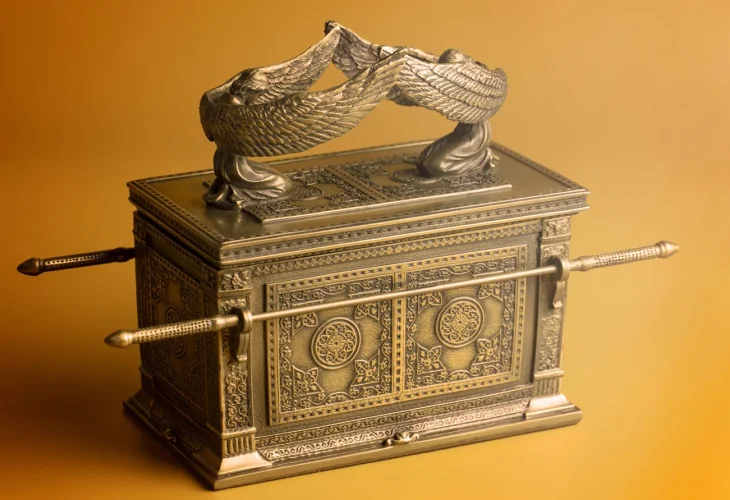Parashat Acharei Mot
The Mystery of the Kaporet: Secrets of the Ark’s Cover, the Cherubim, and the Hidden Face of God
Explore how the Ark’s golden cover became a symbol of both divine protection and revelation, where the cherubim guarded the meeting point between heaven and earth.
 (Photo: shutterstock)
(Photo: shutterstock)In Parshat Acharei Mot, the Torah describes the sacred service of Yom Kippur, highlighting the central role of the kaporet — the golden cover atop the Ark of the Covenant: “Speak to Aaron your brother, that he may not enter at all times into the Holy within the veil, before the kaporet that is upon the Ark, lest he die; for I appear in the cloud above the kaporet.” (Vayikra 16:2)
What exactly is the kaporet and why is it called by this name?
The Dual Meaning of the Word Kaporet
Rabbi Yaakov Tzvi Mecklenburg, author of HaKetav VeHaKabbalah, explains that kaporet means “cover,” but it also alludes to atonement (kaparah). Interestingly, scholar Y.M. Grintz points out that in ancient Egyptian, the term carries both meanings of “covering” and “atoning.”
This still raises a question: if the kaporet is merely a cover, why does the Torah treat it as an independent sacred object rather than a mere accessory? The text speaks of standing before the kaporet and refers to the “House of the kaporet,” implying something more than a lid.
Indeed, the kaporet is not just a covering — it is a vessel of holiness in its own right. It did not require anointing because it represented the very revelation of sanctity itself: “The voice of God spoke from between the keruvim (cherubim) that were upon the kaporet*.”
The Keruvim: Guardians of Divine Revelation
The keruvim that stood upon the kaporet are among the most enigmatic symbols in the Torah. They had the faces of infants, yet bodies that were not human — for they had wings. Like the keruvim stationed at the entrance to Eden after Adam’s sin, they served as guardians of divine revelation, shielding humanity from direct exposure to God’s glory.
The prophet Yechezkel saw keruvim with four faces, suggesting they embodied a synthesis of multiple forms. What, then, was their true shape?
Were the Keruvim Human, Animal, or Both?
The medieval Ba’alei HaTosafot cite differing opinions.
Rabbi Yosef Bechor Shor and Rabbi Yitzhak of Vienna believed the keruvim resembled oxen.
Rabbi Yitzhak ben Yehudah HaLevi held that they were composite creatures combining several species.
Ibn Ezra (on Bereishit 3:24 and Shemot 25:18) wrote that “cherub” is a general term for various angelic forms — perhaps lions or other creatures of the divine chariot, while the infant face symbolized their spiritual, not animal, nature, reflecting that only man is created “in the image of God.”
In that sense, the keruvim might represent young lions (kephir), whose very name in Hebrew connects to kapporet. An infant-faced lion cub perfectly expresses the blend of innocence and power — childlike purity guarding divine majesty.
Indeed, in King Achav's palace at Samaria, archaeologists discovered depictions of winged lions with infant-like faces — strikingly similar to the biblical keruvim.
The Lion Motif and the Meaning of Ariel
Despite their hybrid forms, the keruvim were likely associated with lions — traditional symbols flanking royal thrones. Even today, lions appear on synagogue Arks. The Ark itself is sometimes called Ariel, “the lion of God,” a name that also appears in Yechezkel and Yeshayahu where it can refer to the Temple or to angelic beings called Erelim (“divine heroes”).
If so, the kaporet may have been viewed as something greater than a cover — a fusion of the lion imagery and the concept of atonement.
The Inexpressible Mystery of Their Form
The historian Josephus (Yosef ben Matityahu) wrote that “no man can describe, or even imagine, the form of the keruvim.” Their appearance was intentionally hidden — part of the mystery surrounding divine vision.
This is the reason that the Torah gives no measurements, no weight, and no exact instructions for their form. They exist beyond physical dimension, belonging to the realm of prophetic vision rather than material craftsmanship.

